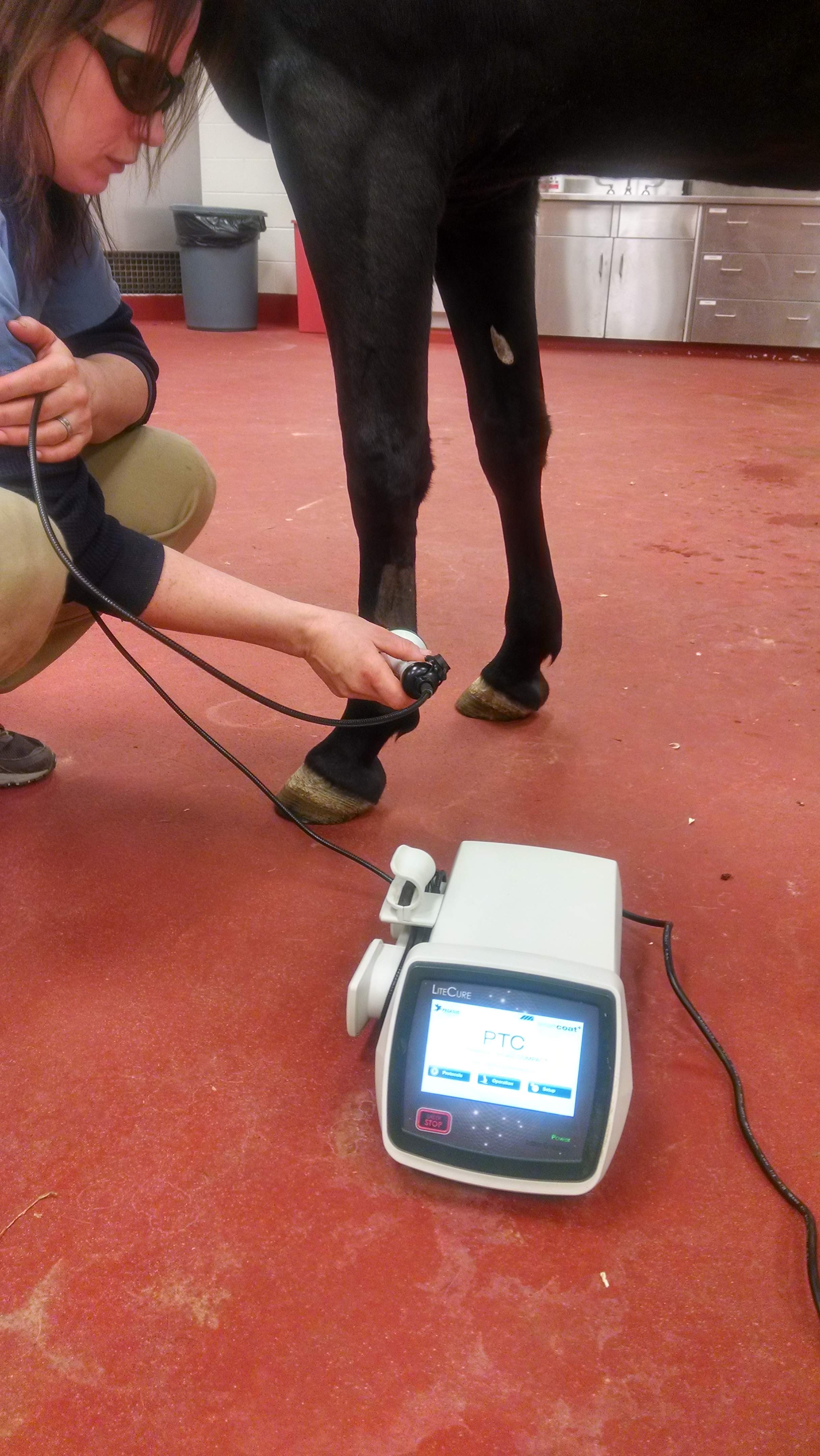Equine Therapy for Kid: Emotional and Behavior Support Clarified
Equine Therapy for Kid: Emotional and Behavior Support Clarified
Blog Article
Examining the Efficiency of Laser Therapy in Equine Treatment for Injury Rehab
The analysis of laser therapy's efficiency in equine injury rehabilitation rests on numerous elements, including healing time, discomfort mitigation, and tissue regeneration. Scientific research studies recommend noteworthy improvements in conditions like tendonitis and osteoarthritis, credited to improved cellular feature and elevated ATP production. Veterinarians regularly observe premium outcomes with laser treatment compared to standard approaches, placing it as a critical component in equine treatment. Nonetheless, the need for continuous monitoring and customized therapy plans can not be overstated. What particular clinical proof sustains these cases, and how do veterinarians execute these protocols in technique?
Recognizing Laser Therapy
Laser therapy has actually ended up being a pivotal device in veterinary medication, specifically in the treatment of equine conditions. Recognized for its non-invasive nature and effectiveness, laser therapy involves the application of certain wavelengths of light to promote cells fixing and reduce swelling. This therapeutic modality is increasingly favored for its capacity to accelerate the recovery process in equines dealing with a variety of bone and joint injuries and chronic problems.
The main device behind laser treatment is its capacity to improve mobile features. When laser light penetrates the skin, it is taken in by mitochondria, the powerhouse of cells, which leads to increased manufacturing of adenosine triphosphate (ATP) This biochemical energy increase promotes cellular repair service and regeneration. In addition, laser treatment advertises vasodilation, improving blood flow and oxygen shipment to damaged tissues, hence accelerating recovery.
In equine medication, laser therapy is specifically advantageous for conditions such as tendonitis, osteo arthritis, and injury recovery. The technique is admired for its pain-relieving residential properties, allowing horses to regain movement and function a lot more rapidly. Vets also value its marginal side impacts compared to other treatment modalities, making it a reputable and secure choice for equine treatment.

Just How Laser Treatment Works

Upon absorption, these photons activate a collection of biochemical changes, boosting mitochondrial function and causing increased adenosine triphosphate (ATP) manufacturing. This rise in ATP accelerates cellular metabolic rate, promoting cells repair and regeneration. Furthermore, laser treatment regulates inflammatory reactions by affecting cytokine levels and decreasing oxidative tension, thereby alleviating pain and swelling.
Another substantial facet of laser treatment is its function in enhancing microcirculation. The treatment advertises vasodilation, boosting blood circulation and oxygen shipment to damaged cells (Equine Therapy). This promotes the removal of mobile debris and supports the proliferation of fibroblasts and collagen synthesis, crucial for wound healing
Medical Evidence
The efficacy of laser treatment in equine treatment has been corroborated through different scientific research studies, showcasing its healing potential throughout a variety of problems. Numerous controlled trials and observational researches have actually recorded considerable renovations in cells repair, pain decrease, and general rehab timelines. A research study performed by Turner et al. (2012) demonstrated that equines treated with low-level laser therapy (LLLT) for ligament injuries showed increased healing compared to those obtaining traditional treatments. The research study highlighted a significant reduction in inflammation and improved collagen development.
In a similar way, research by Johnson and associates (2015) concentrated on equine muscle injuries, exposing that laser therapy significantly sped up muscular tissue fiber regeneration and lowered muscle mass rigidity. These searchings for were supported by histological analyses showing enhanced muscle mass tissue company. Moreover, clinical analyses have actually shown that laser treatment can alleviate chronic problems such as osteo arthritis. A study by Smith et al. (2018) reported that equines with osteoarthritic joints experienced noteworthy pain great post to read relief and enhanced range of activity adhering to a regimen of laser treatment sessions.
Vet Insights

Veterinarians also appreciate the versatility of laser treatment. It can be utilized for a wide variety of problems, from shallow injuries to deeper bone and joint injuries. Dr. Emily Brown highlights its energy in dealing with problems like tendonitis and osteo arthritis, where standard treatments often drop brief. She mentions that laser treatment can be customized to the specific requirements of each steed, making sure optimum end results.
Additionally, veterinarians value the capacity to integrate laser treatment with various other therapy modalities. This multimodal technique can boost general treatment effectiveness, giving a detailed option for equine rehab. Such recommendations from skilled specialists emphasize the growing acceptance and application of laser therapy in equine medication.
Practical Factors To Consider
An essential aspect of executing laser therapy in equine therapy entails understanding the functional factors to consider that ensure its efficiency and safety and security. Firstly, it is crucial to choose the appropriate laser tool, as various kinds differ in wavelength, power, and penetration deepness. Equine Therapy. Veterinarians must be fluent in these parameters to customize therapy methods properly per injury kind
Additionally, the regularity and duration of laser treatment sessions require cautious planning to maximize healing advantages while decreasing any potential unfavorable visit the website results. Consistent tracking of the steed's reaction to therapy can guide necessary modifications in the therapy program. Developing a risk-free and regulated environment throughout treatments is also necessary to prevent unintended exposure to laser emissions, which could harm both the horse and the handler.
Educating and certification of employees administering laser therapy are vital to make certain proper method and to maintain security criteria. In addition, keeping precise documents of each session, including laser settings and observed outcomes, is vital for evaluating the overall effectiveness of the therapy and for making data-driven decisions.
Verdict
Laser therapy has actually emerged as a reliable technique in equine injury rehabilitation, offering significant benefits in healing time, discomfort alleviation, and tissue healing. For ideal results, constant tracking and individualized treatment protocols stay crucial in leveraging the complete possibility of laser therapy in equine care.
Report this page